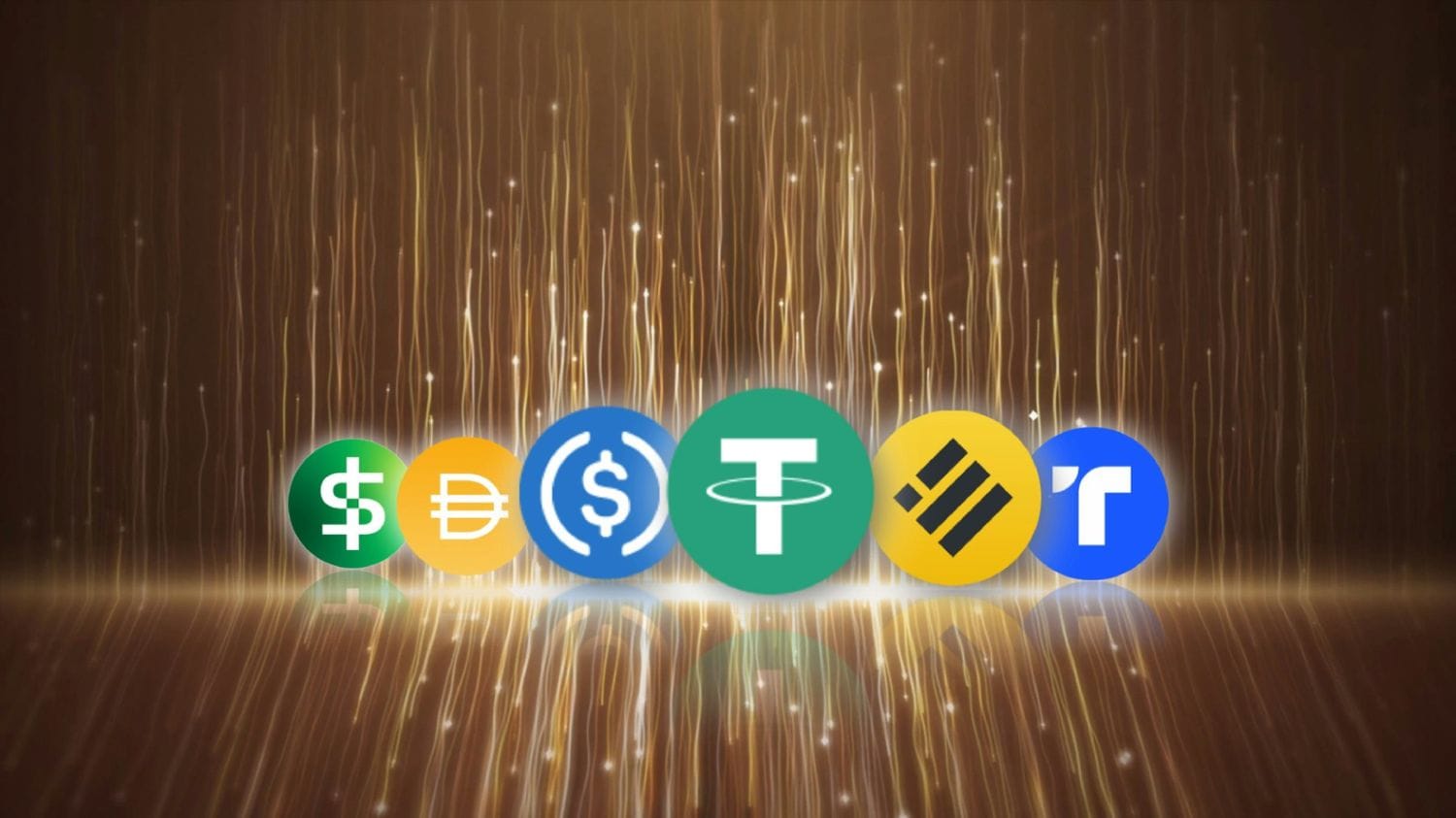Stablecoins are commonly used by investors to earn passive income in the crypto market. This is true for both new and experienced investors. Stablecoin investments often come with minimal fees, which can enhance the attractiveness of these platforms for investors.
Stablecoins are a popular choice because they offer a stable value compared to other cryptocurrencies. Investors can earn passive income by holding stablecoins in their wallets. With many platforms offering different interest rates, how can you find the best stablecoin yield for your investments?
Top Platforms Offering the Best Stablecoin Interest Rates
| Platform | USDT | USDC | DAI |
|---|---|---|---|
| Nexo | Up to 12.00% APY | n/a | n/a |
| Aave | 2.88% APY | 2.46% APY | 2.68% APY |
| Compound | 3.74% APR | 3.94% APR | N/A |
| Coinbase | Not Available | 4.1% APY | Not Available |
*Last updated April 2025
Understanding Stablecoins: A Safer Bet in the Crypto Market

Stablecoins are a safer choice for investors than other cryptocurrencies. This is because they do not have the same drastic price changes. Stablecoins are a type of cryptocurrency that aims to maintain a consistent value. They are typically pegged to traditional fiat currencies like the US dollar.
Unlike other cryptos that are highly volatile, stablecoins offer a haven for investors looking to avoid the dramatic swings often seen in the crypto market. Because they are backed by more stable assets, providing a unique opportunity to earn interest while minimizing risk.
Benefits of Earning Interest on Stablecoins
Earning interest on stablecoins offers several compelling benefits for investors and users alike. One of the primary advantages is the potential for higher returns compared to traditional savings accounts. While traditional savings accounts often offer minimal interest rates, stablecoin interest rates can climb to 9-13%, or even more, making them an attractive option for those looking to maximize their digital assets.
Additionally, stablecoins offer a sense of security and predictability, as they are pegged to stable reserves like the US dollar, euro, or commodities such as gold. This stability makes them suitable for everyday transactions and as a store of value. Unlike other cryptocurrencies that can experience significant price fluctuations, stablecoins maintain a consistent value, providing a reliable means to earn interest.
Furthermore, earning interest on stablecoins provides a unique opportunity to generate passive income in the digital economy. By depositing stablecoins into interest-bearing platforms, individuals can potentially earn higher returns compared to traditional savings accounts. This approach combines the benefits of traditional savings with the innovative features of cryptocurrency, making it an attractive option for both novice and experienced investors.
Best Crypto Stablecoins
When it comes to stablecoins, a few have emerged as leaders in the market due to their stability and widespread adoption. USDT (Tether) is the most liquid and transacted stablecoin, making it a popular choice for traders and investors. USDC (USD Coin) is widely accepted on most large exchanges and has achieved regulatory compliance, adding an extra layer of trust for users.
BUSD (Binance USD) is an ERC20 token issued on the Ethereum blockchain, known for its strong backing and integration with the Binance ecosystem. USDP (Pax Dollar) is a fiat-collateralized stablecoin based on the Ethereum network, offering transparency and regulatory oversight. Lastly, DAI stands out as an entirely decentralized stablecoin, meaning it doesn’t have the backing of any centralized authority, providing a unique option for those who prioritize decentralization.
Does Stablecoins Pay Interest? Methods to Earn Interest Rates
There are several methods to earn interest on stablecoins, each offering different levels of flexibility and returns. Interest-bearing accounts are the most straightforward method to generate passive income from stablecoin holdings. These accounts allow users to deposit their stablecoins and earn interest over time, similar to a traditional savings account.
Fixed-term deposits involve locking stablecoins for a predetermined period in exchange for higher interest rates. This method is ideal for those who can commit their funds for a set duration to maximize returns. Flexible savings accounts, on the other hand, allow users to earn interest while maintaining the ability to withdraw funds at any time, offering a balance between liquidity and earnings.
Loyalty and reward programs can also boost interest rates or provide additional benefits. Some platforms offer unique features that provide alternative methods to earn or boost interest. For example, YouHodler’s Multi HODL allows users to earn interest on their stablecoins through a combination of lending and trading strategies. It’s essential to understand the nuances of APY versus APR and be aware of any hidden fees when selecting a platform.
Why Are Stablecoin Interest Rates So Attractive?
Stablecoin interest rates can often surpass those offered by traditional savings accounts, which raises the question: why are they so high? The answer lies in the difference between traditional banking systems and crypto lending platforms. Traditional banks have overhead costs and regulatory burdens that crypto platforms often bypass, allowing the latter to offer higher returns.
Moreover, the demand for borrowing stablecoins on these platforms is high, particularly for trading, liquidity provision, and other financial services in the crypto market. This demand drives up the interest rates, making stablecoin interest rates higher than traditional interest rates and providing attractive yields for those willing to lend their stablecoins.
Balancing Yield and Risk: What to Consider

While the allure of high interest rates is tempting, it’s crucial to consider the risks involved. Platforms can and do go bankrupt, as seen in past crypto market fluctuations. This means that while high yields are attractive, they often come with increased risk.
It is essential to practice proper risk management and conduct your own research to understand the risks and terms associated with these financial options.
Regulatory Uncertainty: The stablecoin market is still relatively new, and regulation is constantly evolving. This uncertainty can affect the stability and safety of your investments. Therefore, choosing platforms with a strong track record and transparent operations, like Ledn and Nexo, is essential.
Platform credibility is important for the safety of your money, not just the interest rate. Choose a trustworthy platform. It’s advisable to research the platform’s history, security measures, and user reviews before making a decision.
Centralized vs. Decentralized Crypto Lending Platforms: Understanding the Risks
It’s crucial to understand the differences between centralized and decentralized platforms, especially when it comes to the risks involved in securely storing crypto assets and the impact of stablecoins on mitigating volatility. Each type of platform offers unique benefits, but they also come with distinct challenges that you should be aware of before making your decision.
Centralized Platforms: Convenience with a Catch
Centralized platforms like Ledn, Nexo, and Coinbase offer a user-friendly experience that’s hard to beat. They often provide higher interest rates and more straightforward onboarding processes, making them an attractive option for those new to the crypto space. However, this convenience comes at a cost: you’re placing a significant amount of trust in a third party.
Users can earn accrued interest on their deposits over time, reflecting the dynamic nature of interest rates in the DeFi ecosystem.
When you use a centralized platform, you’re handing over control of your assets to an institution. This means you’re exposed to risks such as platform insolvency, regulatory crackdowns, or even cyberattacks. The platform might offer insurance or guarantees, but remember, in the fast-paced world of crypto, nothing is ever 100% secure. If a centralized platform were to fail, you could lose access to your funds or be left with little recourse.
Moreover, centralized platforms are subject to regulatory environments that can change rapidly. Governments and regulatory bodies are still figuring out how to deal with cryptocurrencies, and a sudden policy shift could impact your ability to access your funds or even the platform’s ability to operate.
Decentralized Platforms: Freedom with Responsibility
On the other hand, decentralized platforms like Aave and Compound offer a completely different approach. By leveraging smart contracts and blockchain technology, these platforms eliminate the need for a central authority. Instead, you interact directly with the protocol, maintaining control over your assets at all times.
But with this freedom comes responsibility. Decentralized platforms are often more complex to use and require a deeper understanding of how blockchain technology works. Additionally, while they reduce the risk of platform insolvency and government interference, they introduce other risks, such as smart contract vulnerabilities and market volatility.
Smart contracts are coded instructions that automatically execute transactions, and while they are designed to be secure, they are not immune to bugs or hacks. If a smart contract is exploited, there's no central authority to turn to for help. You're essentially on your own.
Also, the decentralized finance (DeFi) space is still relatively new and rapidly evolving, which means that the rules and best practices are still being established. This can make it a risky environment, particularly for those who aren't well-versed in the technical aspects of crypto.
Balancing Your Choices: What's Right for You?
Choosing between centralized and decentralized platforms ultimately comes down to your own risk tolerance, technical know-how, and investment goals. Centralized platforms might be easier and more secure for those who prefer a hands-off approach, but they require trust in a third party. Decentralized platforms offer more control and potentially higher returns, but they demand a higher level of engagement and understanding.
Whichever path you choose, the most important thing is to stay informed and make decisions based on a clear understanding of the risks involved. The crypto landscape is full of opportunities, but it's also fraught with challenges. By educating yourself and staying vigilant, you can navigate this space with confidence and make the most of your investments.
Understanding Stablecoins: Types, Uses, and Benefits
Stablecoins are digital currencies designed to maintain a stable value, minimizing volatility commonly associated with cryptocurrencies like Bitcoin. They are categorized into four main types: fiat-backed, crypto-backed, commodity-backed, and algorithmic stablecoins.
Each stablecoin types offers unique advantages, from stability through fiat reserves to decentralized options backed by cryptocurrencies. Stablecoins play a crucial role in the crypto ecosystem, facilitating trading, savings, and international payments. Their reliability makes them ideal for those looking to preserve value in the volatile crypto market, making them essential tools for both novice and seasoned investors.
Getting Started with Stablecoin Interest Rates
To get started with stablecoin interest rates, it’s essential to conduct personal research and possibly consult a financial advisor to determine which platform best aligns with your investment objectives and risk tolerance. Choose a platform that offers a user-friendly interface and a wide range of stablecoins to invest in. Consider the fees associated with each platform and choose one that offers competitive rates.
Look for platforms that offer additional features such as staking, lending, and borrowing. It’s also crucial to evaluate the credibility of the platform and its business model before investing. Begin earning interest on your stablecoins by depositing them into an interest-bearing platform. Make sure to understand the terms and conditions of the platform, including any minimum balance requirements or lock-up periods.
Regulatory Environment and Market Conditions
The regulatory environment and market conditions play a significant role in shaping stablecoin interest rates. Stablecoins are designed to maintain their value relative to a specific fiat asset, which attracts a large number of investors and users, generating a higher demand for lending and borrowing services. However, regulatory uncertainty can theoretically lead to issues related to the value of these assets.
Market conditions, such as liquidity and volatility, can also impact stablecoin interest rates. It’s essential to stay informed about the latest regulatory requirements and market trends to make informed investment decisions. Additionally, it’s crucial to understand the risks associated with earning interest on stablecoins, including platform bankruptcy risk and regulatory uncertainty. By staying vigilant and conducting thorough research, investors can navigate the complexities of the crypto market and make the most of their stablecoin investments.
Want to make the most of your stablecoin investments? Join our crypto learning community! Get exclusive tips, strategies, and updates on earning top interest rates in 2025. Whether you're a beginner or pro, our membership keeps you ahead in the crypto game. Sign up now and grow smarter!
What is the safest way to earn interest on stablecoins?
The safest way to earn interest on stablecoins is by using decentralized protocols with a proven track record. Look for options with strong audits, insurance coverage, and transparent APY structures.
Are stablecoin yields guaranteed?
No, stablecoin yields are not guaranteed. While stablecoins aim to maintain price stability, interest rates can fluctuate based on supply, demand, and market risk. Always assess platform risk before depositing.
Is earning interest on stablecoins taxable?
Yes, in most jurisdictions, interest earned on stablecoins is considered taxable income. Always consult a tax professional to report your earnings properly, especially if you're using DeFi protocols.



